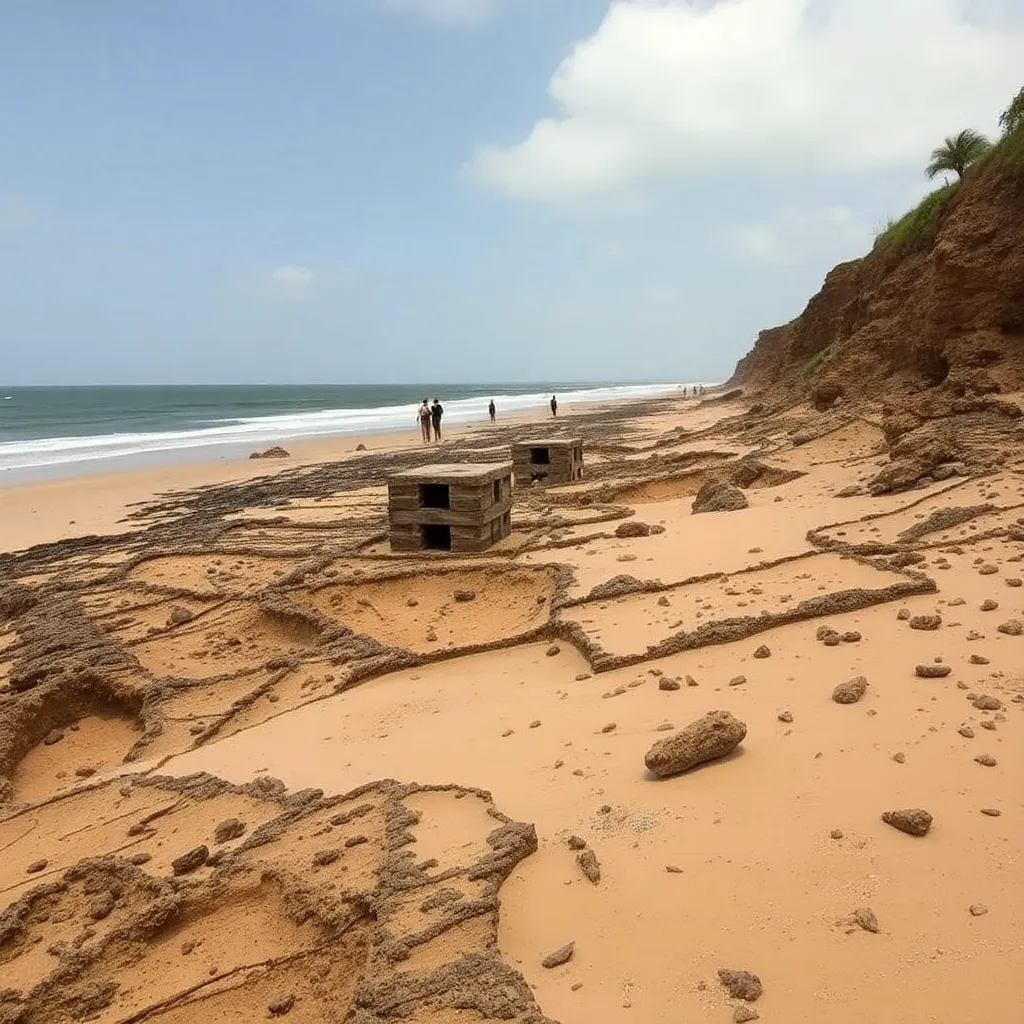Beach Closures in Buxton: Cold War Secrets Emerge
BUXTON, NC – A stunning twist of fate has unfolded on the picturesque beaches of North Carolina’s Outer Banks. Erosion is gradually revealing parts of a long-buried Cold War military site, prompting yet another round of beach closures. Cape Hatteras National Seashore has closed off approximately 1,600 feet of beach for safety concerns, leaving locals and visitors scratching their heads. The area now deemed off-limits stretches from “the southernmost beachfront home in the village of Buxton and ending at the first (southernmost) jetty.” That’s about three-tenths of a mile of sandy paradise now out of reach for beachgoers.
The Unraveling Mystery of Naval Facility Cape Hatteras
But why the sudden clamping down on this scenic stretch? Well, it seems that something buried deep beneath the sand has stirred up trouble. Park officials have noted signs of petroleum leaking from a site that once buzzed with military activity. Seashore staff detected strange odors and a concerning sheen of oil near an area formerly utilized by the Navy and Coast Guard.
In a March 24 news release, officials revealed, “The Coast Guard and Army Corps of Engineers have been notified about the recent observations and the Seashore will be meeting with both agencies.” It sounds like the situation is under serious scrutiny, and rightfully so!
A Glimpse into the Cold War
For those unfamiliar with the history, the now-revealed military site known as Naval Facility Cape Hatteras served a crucial purpose during its operational years. Historians explain that this once top-secret base was involved in the “secret monitoring of submarines” as part of an early warning system against potential ballistic missile threats from the ocean. During the tense days of the Cold War, the Sound Surveillance System (SOSUS) was a key player for the U.S. Navy, allowing them to track and monitor Soviet submarine activity.
The SOSUS system consisted of an extensive network of underwater listening stations, and on June 26, 1962, Navy personnel stationed in the Cape Hatteras terminal building made history by detecting a Soviet diesel submarine for the very first time.
Closing Time for the Beach
The Cape Hatteras National Seashore began closing sections of the beach south of Buxton back in September after storms unearthed potentially hazardous infrastructure that had been hidden beneath the sand for years. With this latest announcement, bathers, beachcombers, and fishermen alike are facing restrictions they hadn’t anticipated.
Concerns regarding the hidden hazards at the site have been on many people’s minds for quite some time, with risks of groundwater contamination among them. According to reports, an agreement between the National Park Service and the U.S. Coast Guard stipulated that all remaining structures should be removed once deemed unnecessary. This raises questions about the aging infrastructure, including the remnants of a sewage treatment plant and two diesel generators.
Looking Ahead
As Cape Hatteras grapples with this complicated situation, it’s hard not to wonder what other secrets might lurk beneath the surface. The area, hailed for its wide-ranging natural beauty, is now at the crossroads of history and environmental safety. With the collaboration of the Coast Guard and the Army Corps of Engineers, it remains to be seen how quickly solutions can be found to restore public access to this beloved beach.
So, if you’re planning a trip to the shores of Buxton anytime soon, be sure to keep an eye on updates from the park officials. After all, you might just find yourself wandering through a page of history—or at least dodging a few unintended hazards. Stay safe, beachgoers!

Author: STAFF HERE OUTER BANKS WRITER
The OBX STAFF WRITER represents the experienced team at HEREOBX.com, your go-to source for actionable local news and information in the Outer Banks, Dare County, and beyond. Specializing in "news you can use," we cover essential topics like product reviews for personal and business needs, local business directories, politics, real estate trends, neighborhood insights, and state news affecting the area—with deep expertise drawn from years of dedicated reporting and strong community input, including local press releases and business updates. We deliver top reporting on high-value events such as the Outer Banks Seafood Festival, NC VIP Fishing Tournament, and NCBBA Red Drum Tournament. Our coverage extends to key organizations like the Outer Banks Chamber of Commerce and Outer Banks Community Foundation, plus leading businesses in tourism, retail, and hospitality that power the local economy such as Kitty Hawk Kites, Outer Banks Mall, and Avon Fishing Pier. As part of the broader HERE network, including HEREAsheville.com, HERECharlotte.com, HEREGreensboro.com, and HERERaleigh.com, we provide comprehensive, credible insights into North Carolina's dynamic landscape.





